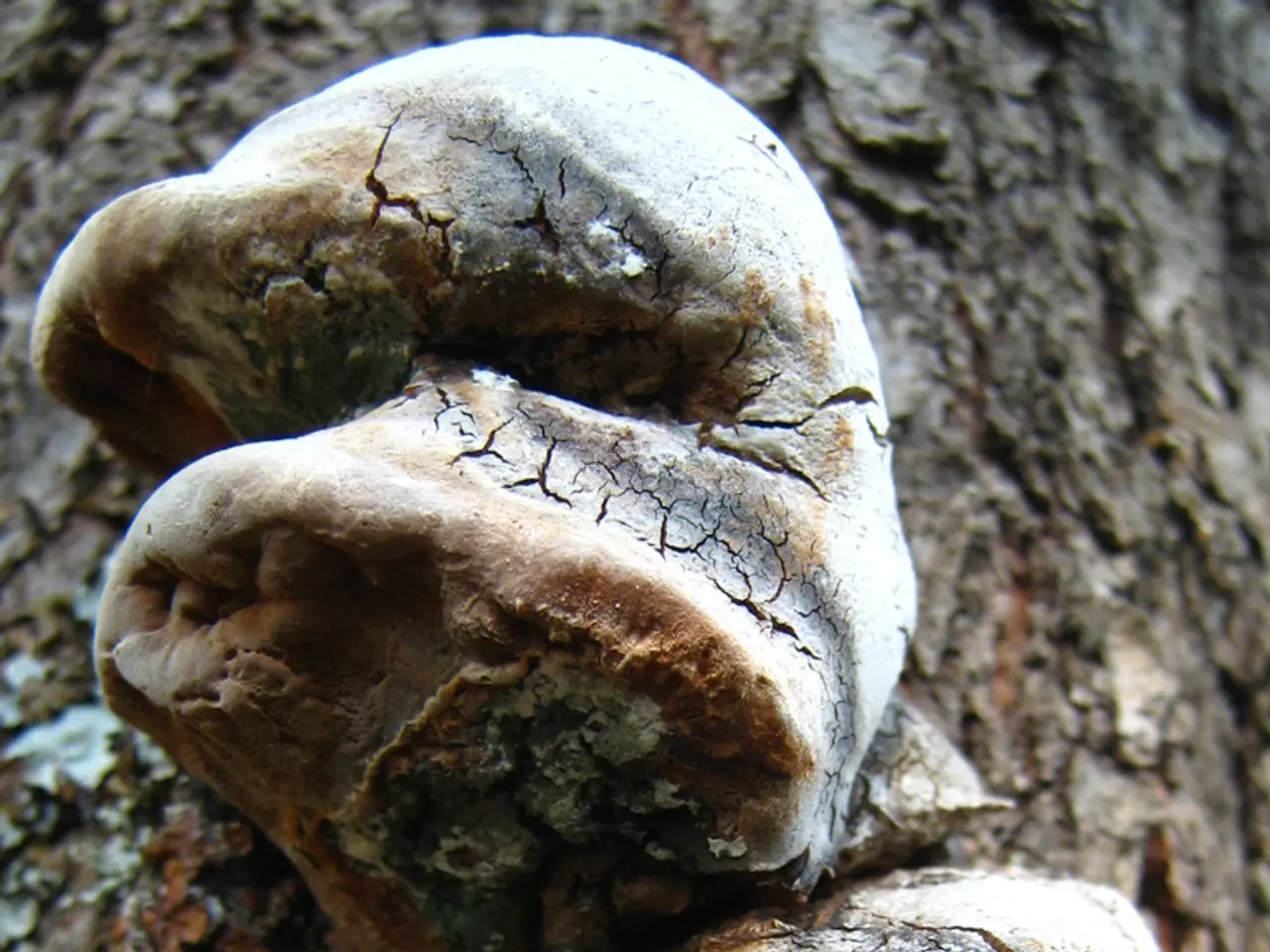Fungal infections of the foot: Varieties and remedies
Tinea pedis, commonly known as athlete's foot, and onychomycosis, or fungal nail infections, are common skin and nail conditions caused by dermatophyte fungi, particularly Trichophyton species like Trichophyton rubrum. These fungi thrive in warm, moist environments, such as sweaty feet inside non-breathable shoes, public showers, locker rooms, and swimming pools.
Risk factors for both conditions include prolonged wearing of closed, non-breathable shoes, exposure to communal wet environments, poor foot hygiene, sharing contaminated surfaces or footwear, older age, nail trauma or injuries, medical conditions that impair immunity, bunions, and tight shoes. For athlete's foot, sweaty feet and walking barefoot in public places are notable risk factors.
Tinea pedis typically presents with itching, burning, peeling skin (often between toes), and sometimes blisters. Onychomycosis manifests as thickened, discolored (often yellow or white), brittle, and deformed toenails or fingernails.
Treatment for tinea pedis may include topical antifungal creams or sprays, while onychomycosis requires more extensive treatment due to the fungi invading the nail plate. Treatment often requires prolonged courses of topical or oral antifungals to eradicate the fungus and allow healthy nail growth. Common oral antifungals include terbinafine and itraconazole, but therapy should be guided by a healthcare provider.
In addition to medication, both conditions may require foot hygiene education, environmental measures to prevent reinfection, and in some cases, medical nail avulsion or laser therapy. If treatments for fungal infections do not help, it is essential to contact a doctor for further advice.
Prevention measures include treating athlete's foot promptly, sanitizing nail clippers, keeping the nails short, and moisturizing dry skin. The American Academy of Dermatology recommends wearing sandals or flip-flops in changing rooms, gyms, pools, or communal showers to prevent tinea pedis or athlete's foot. Once the infection is gone, it is advisable to throw away shoes worn during the infection to prevent recurrence.
Prompt treatment can prevent the infection from getting worse. If you notice any signs of a nail or foot infection, such as itchiness or color changes, especially if you have a compromised immune system or underlying conditions like diabetes, consult a doctor or pharmacist for advice.
- Ankylosing spondylitis, a type of inflammatory arthritis, is a predictive medical condition that may develop in individuals with the HLA-B27 antigen, which can also be found in those with psoriatic arthritis.
- Science continues to explore the relationship between fungal infections of nails and psoriasis, as both are skin conditions that can impact a person's health and wellness.
- Depression, obesity, Alzheimer's, bipolar, ulcerative colitis, multiple sclerosis, type 2 diabetes, and HIV are some other medical conditions that require fitness and exercise, skin care, and a healthy diet for effective management.
- CBD, a compound found in cannabis, has shown promise in treating various medical conditions, including anxiety, chronic pain, and epilepsy, among others.
- Fungal infections of nails and athlete's foot share common risk factors such as prolonged wearing of closed, non-breathable shoes, exposure to communal wet environments, poor foot hygiene, and medical conditions that impair immunity.
- AQ, a patented ingredient in FungalINfectionOfNails treatment cream, has been shown to be effective in treating fungal infections of nails, while maintaining nail strength and flexibility.
- In certain cases, arthritis, including spondylitis and psoriatic arthritis, may require medical nail avulsion or laser therapy, in addition to medication and foot hygiene education.
- For individuals with diabetes, identifying and treating foot infections promptly is crucial, as diabetes can compromise the immune system and slow healing, potentially leading to ulcers and other complications.
- When it comes to managing medical conditions like athlete's foot, psoriasis, and fungal infections of nails, medical science stresses the importance of proper foot hygiene, environmental controls, and follow-up care for effective treatment.
- In addition to medication, effective skin care, exercise, and healthy eating can contribute to managing and predicting the progression of conditions like depression, obesity, Alzheimer's, bipolar, ulcerative colitis, multiple sclerosis, type 2 diabetes, and HIV.
- Prevention measures for athlete's foot include treating it promptly, sanitizing nail clippers, keeping the nails short, and moisturizing dry skin, in addition to wearing sandals or flip-flops in communal shower areas, gyms, pools, and changing rooms.
- It's essential to consult a doctor or pharmacist for advice if you suspect any signs of a nail or foot infection, especially if you have a compromised immune system or underlying conditions like diabetes, as prompt treatment can prevent the infection from getting worse.




